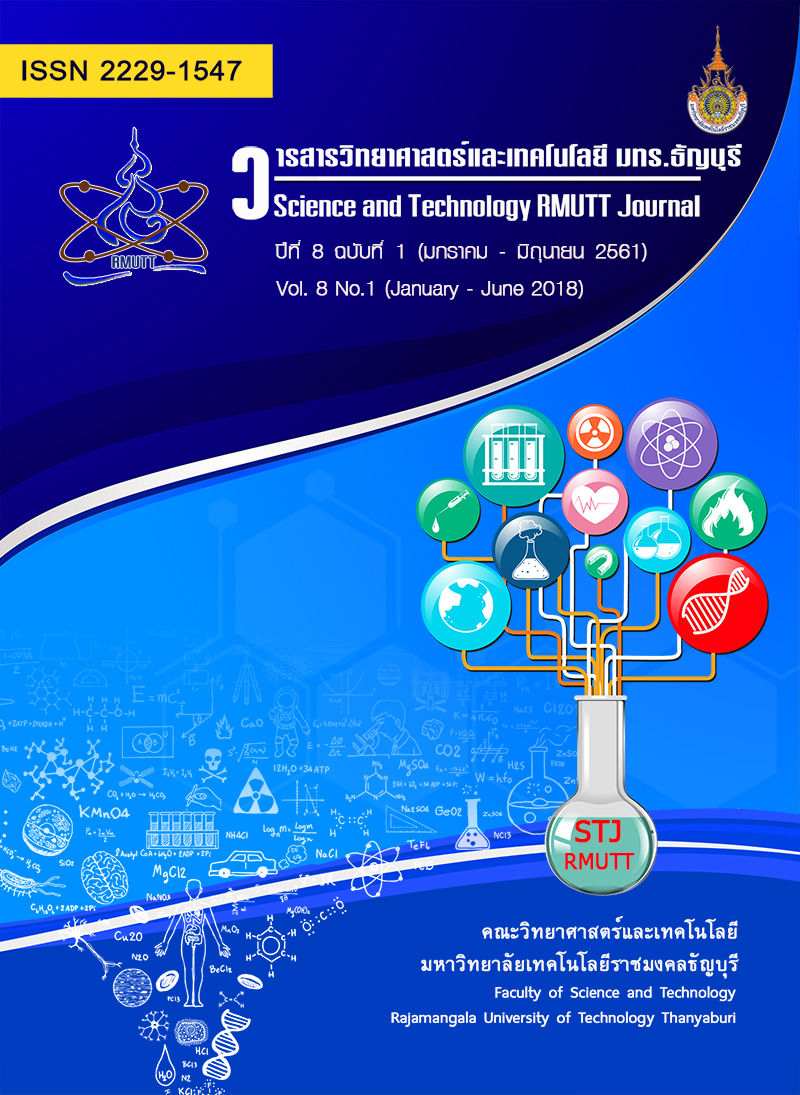Influencing of wheat flours on physical quality attributes of noodle
Main Article Content
Abstract
A study was to investigate the influence of wheat flours on noodle qualities. Bread flours, all-purpose, and noodle flours (3 brands) were chosen to make the alkaline noodles. Most particles of all flours ranged between 120-140 mesh (75-89%). The protein contents were highest in bread flours (13.8%) following by noodle flours (12.5-12.7%) and all-purpose flours (10.6%), respectively. Ash value was a little high in noodle flours (0.59-0.63%) than others (0.48-0.52%). Whilst, pH, moisture content and color values of all flours were slightly different. The alkaline noodles made from noodle flours brand 1 and 3 revealed the good firmness than others. These cooked samples attained a high tensile strength (24.28-24.39 g) and lower the adhesiveness (5602-5761 g), and also displayed the bright yellow. The soft texture and yellowish gray were observed for noodle made from bread flours, all-purpose and noodle flours brand 2. All cooked noodles displayed the high value of pH (9.10-9.22) and gained weight (44.2-55.3), with corresponding to the increased of moisture (58.7-64.3%) and water activity (0.940-0.959). Summarizing difference of wheat flours well related to texture and color qualities of alkaline noodles. In this study showed that the appropriated flours to make the alkaline noodle should contain protein about 12%.
Article Details
References
Guoquan H. and Mark K. Asian noodle technology. Technical Bulletin.1998. 12:1-10.
Vaibhav B.P., Kumar S.B., Madhumathi R. and Prabhasankar P. Influence of health based ingredient and its hydrocolloid blends on noodle processing. Food Measure. 2014. 8:283–295.
Ung K.B. Chapter 11 Effects of flour protein and starch on noodle quality. In: Gary GH, editor. Asian Noodles: Science, Technology, and Processing. Wiley & Sons, Inc, USA. 2010. p.261-284.
Andrew S.R. and Graham B.C. Chapter 13 Effects of flour characteristics on noodle texture. In: Gary GH, editor. Asian Noodles: Science, Technology, and Processing. Wiley & Sons, Inc, USA. 2010. p.313-330.
AOAC. Association of Official Analytical Chemists. Official Method 992.23, Crude Protein in Cereal Grains. 2016, 20thed. Association of Official Analytical Chemists, Washington, D.C.
AOAC. Association of Official Analytical Chemists. Official Method 930.30, Milk-dried- Ash. 2016, 20th ed. Association of Official Analytical Chemists, Washington, D.C.
Man L., Ke X.Z., Xiao N.G., Kristof B. and Hui M.Z. Natural additives in wheat-based pasta and noodle products: Opportunities for enhanced nutritional and functional properties. Comprehensive Reviews in Food Science and Food Safety. 2014. 13:347-357.
Fuerst E.P., James V.A. and Craig F.M. Chapter 12 Effects of polyphenol oxidase on noodle color: Mechanisms, Measurement, and Improvement. In: Gary GH, editor. Asian Noodles: Science, Technology, and Processing. Wiley & Sons, Inc, USA. 2010: 285-312.
Diane M.M. Flour components affecting paste and noodle colour. Journal of the Science of Food and Agriculture. 1984. 35:463-471.
Asenstorfer R.E., Wang Y. and Mares D.J. Chemical structure of flavonoid compounds in wheat (Triticum aestivum L.) flour that contribute to the yellow colour of Asian alkaline noodles. Journal of Cereal Science. 2006. 43(1):108-119.
Ting L., Xiao N.G., Ke X.Z. and Hui M.Z. Effects of alkali on protein polymerization and textural characteristics of textured wheat protein. Food Chemistry. 2018. 239:579-587.


